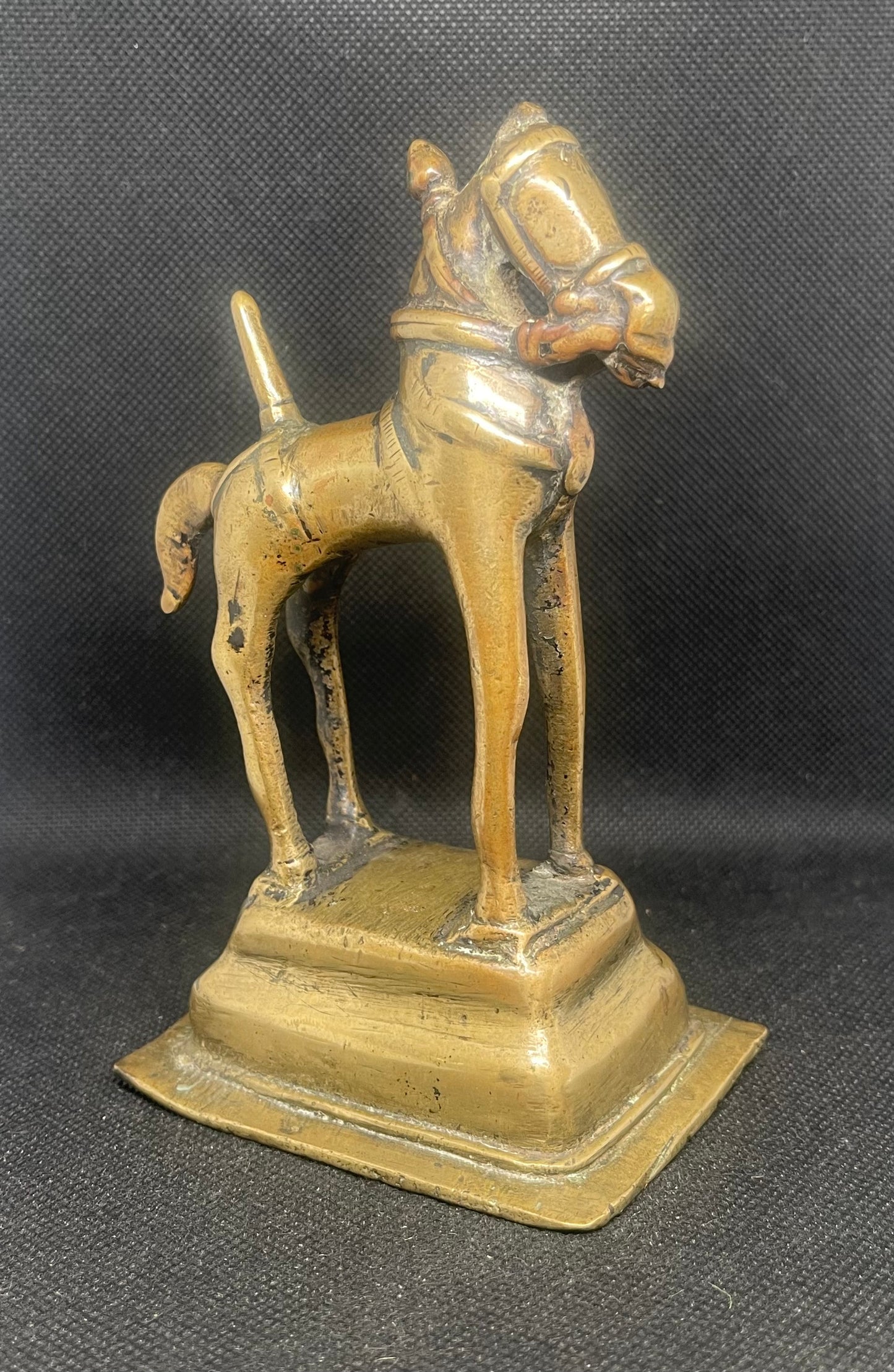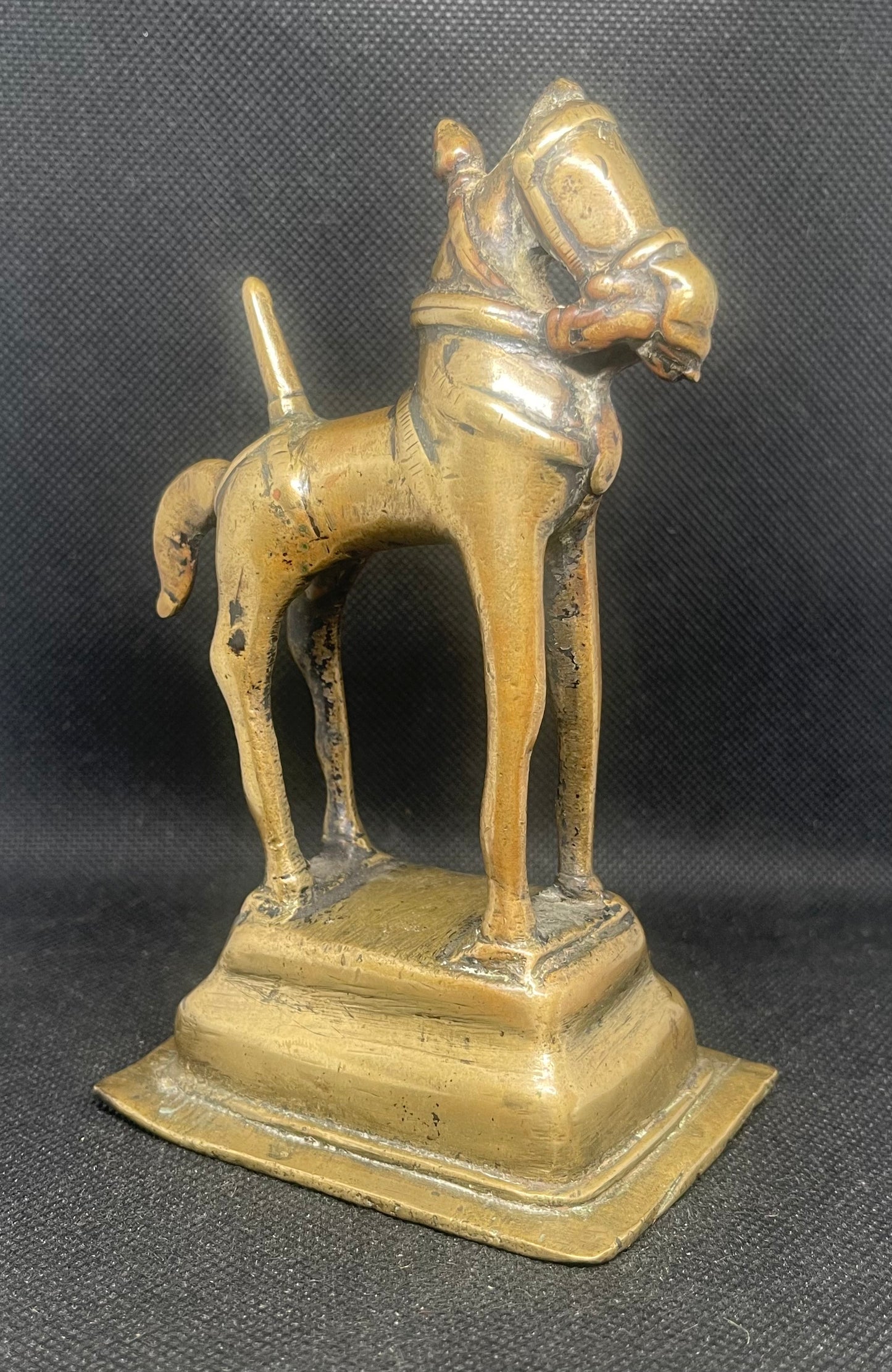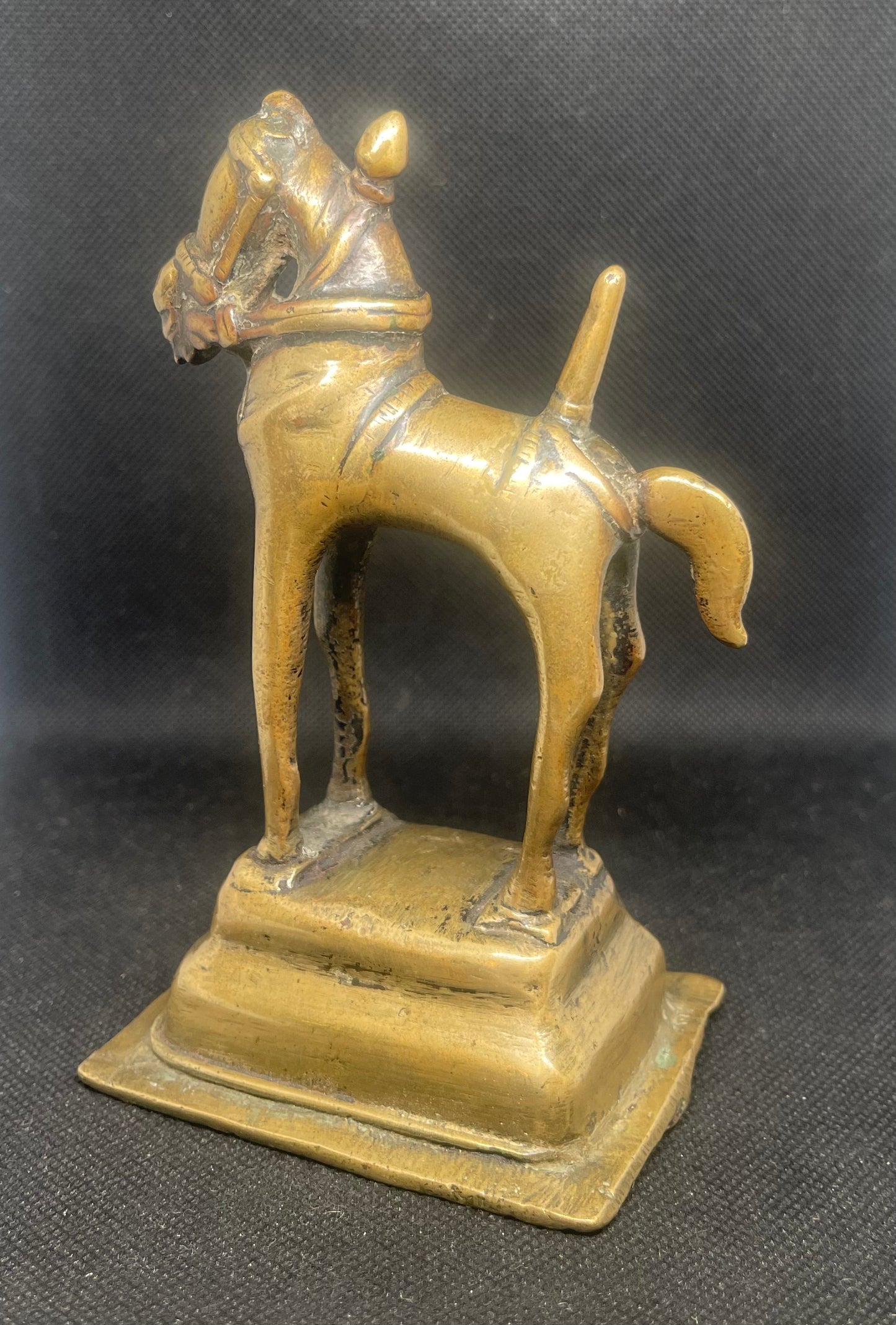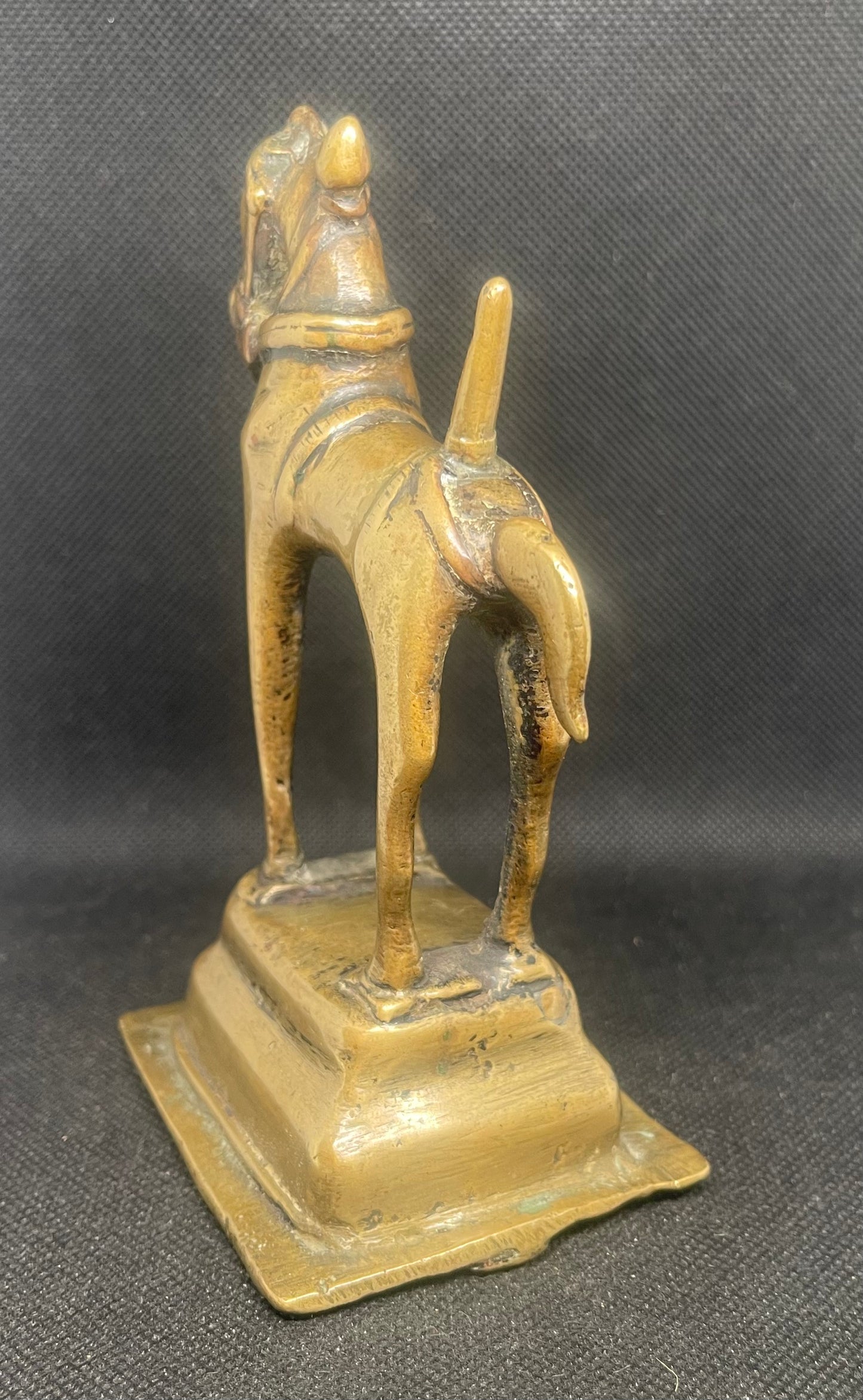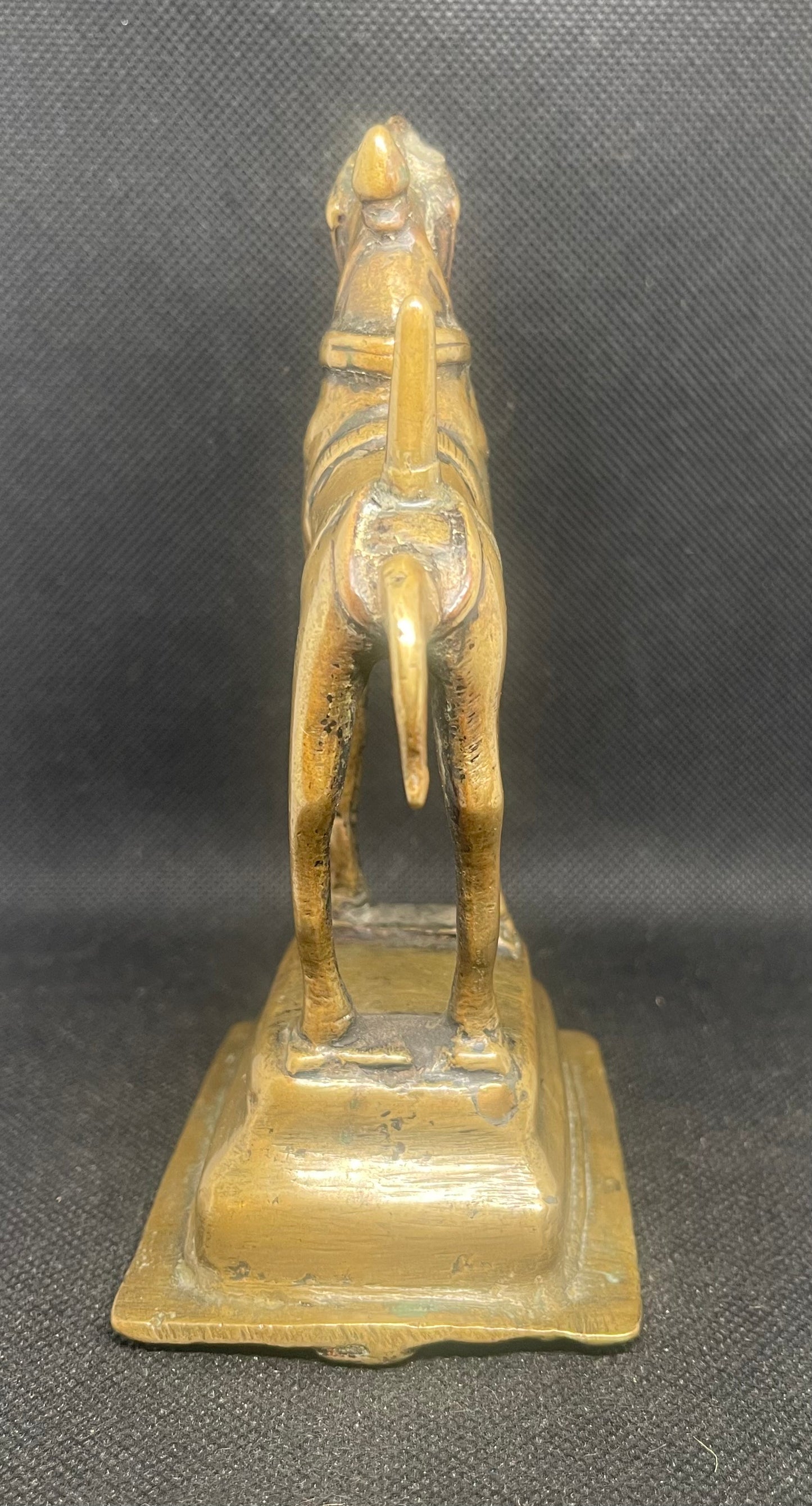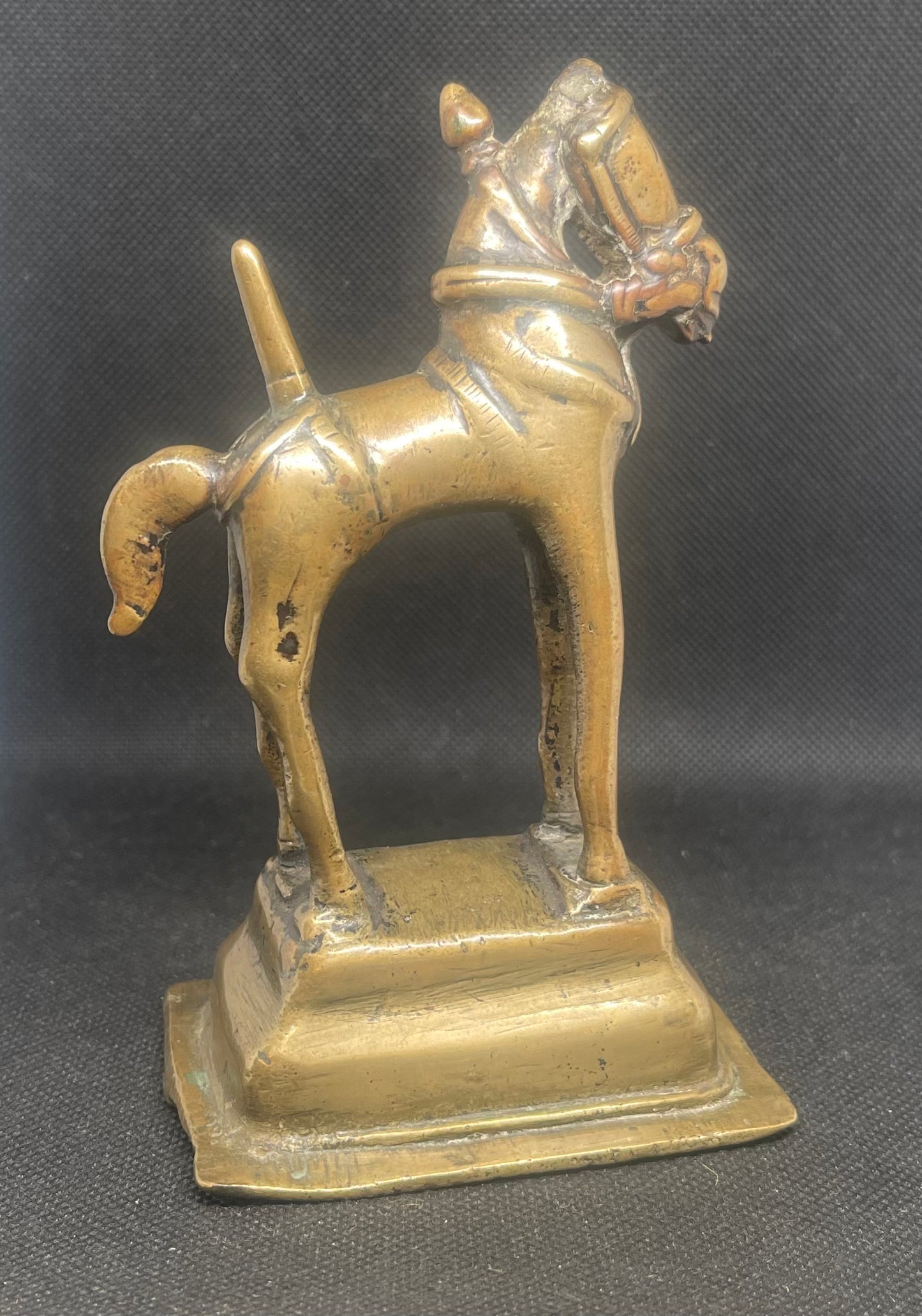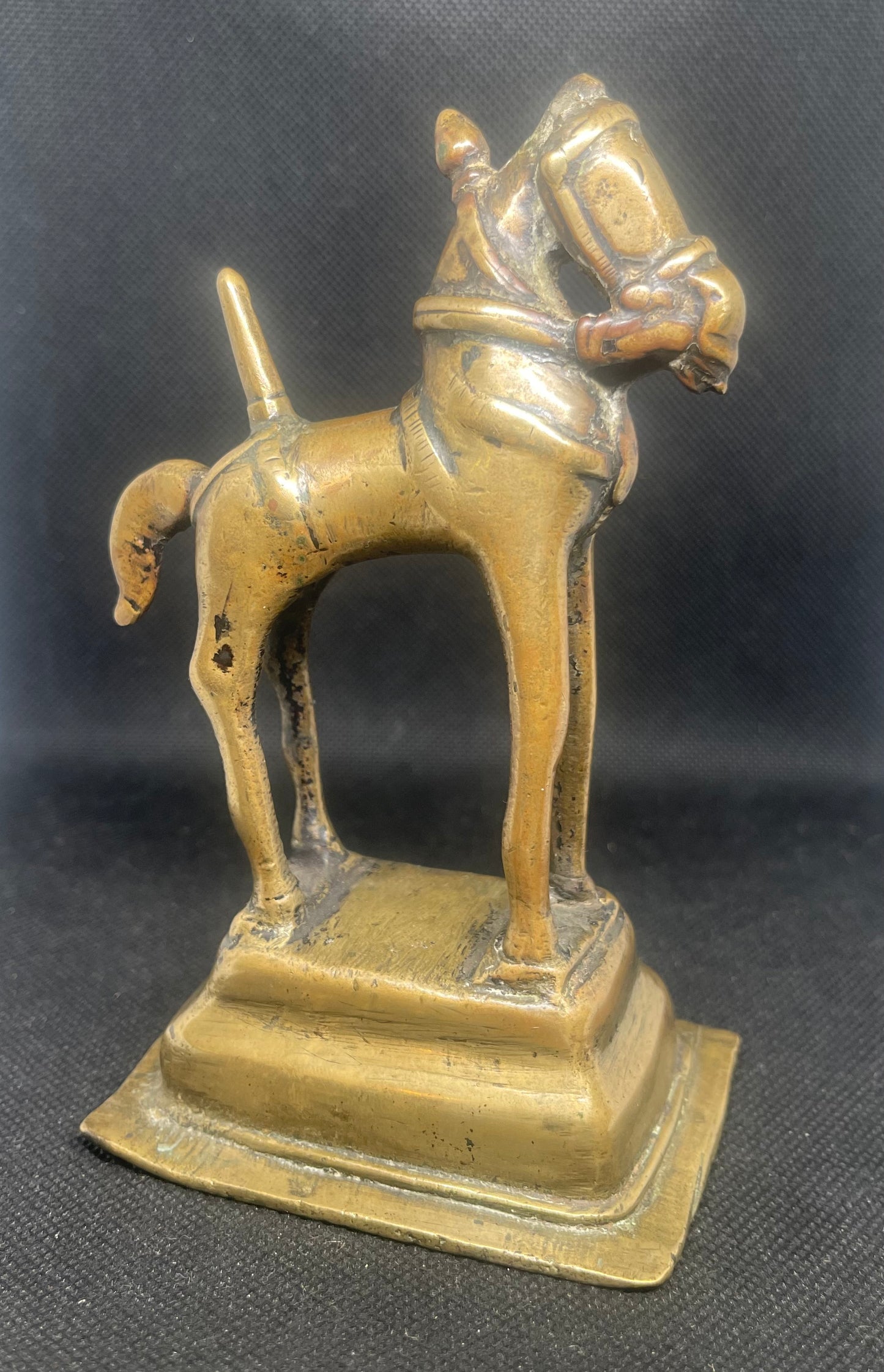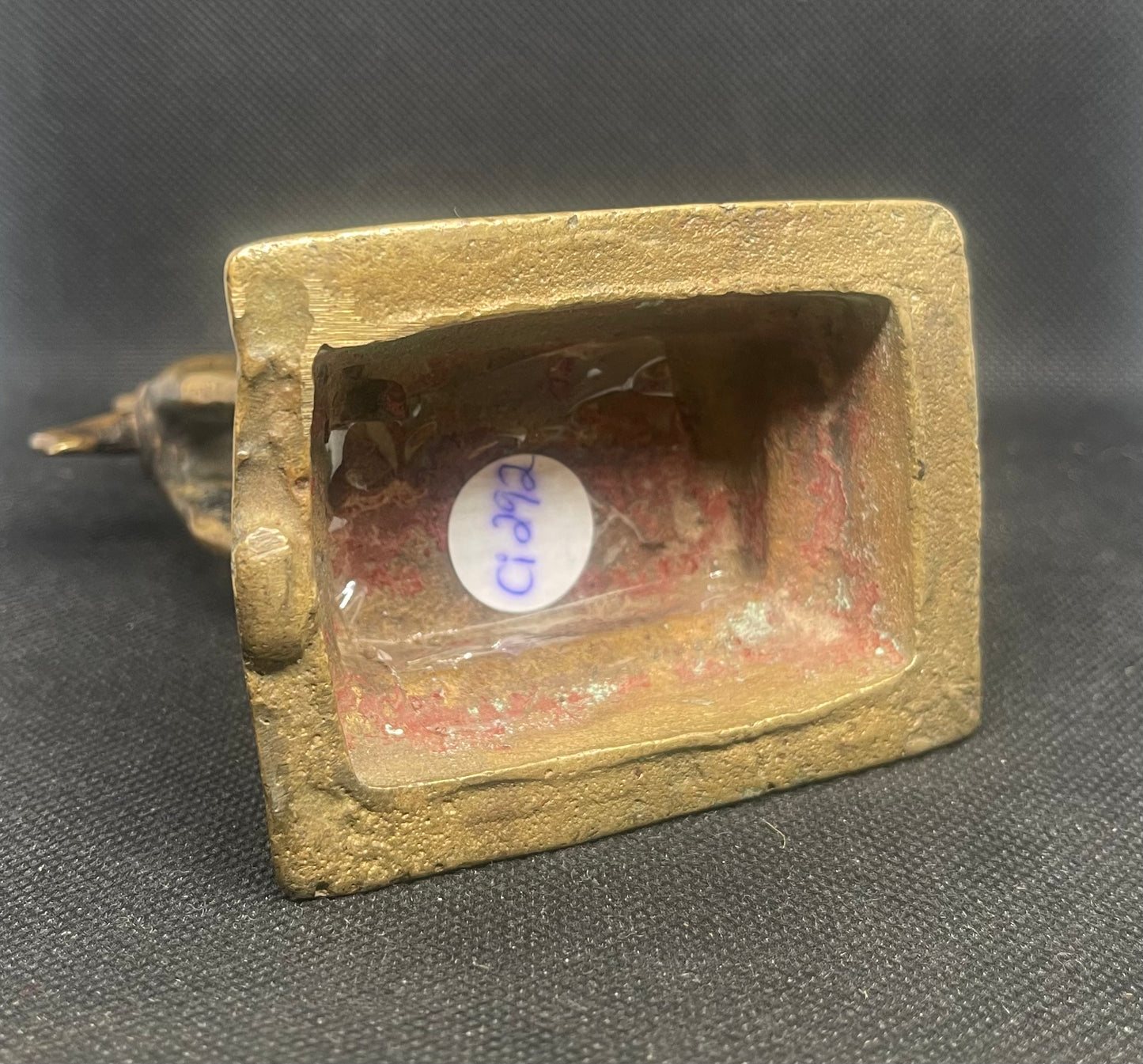EarthHeart&Art
Antique Sculpture of the Vahana Nandi (the Mount of Lord Shiva) of Khandoba
Antique Sculpture of the Vahana Nandi (the Mount of Lord Shiva) of Khandoba
Couldn't load pickup availability
vahana, (Sanskrit: “mount” or “vehicle”) in Hindu mythology, the creature that serves as the vehicle, or “carrier,” and as the sign of a particular deity. The vahana accompanies, pulls the chariot of, or serves as the seat or mount of his god. Images of the vahana are also used on banners and emblems to identify the god or the cult affiliation of the devotee.
Upon the partnership between the deity and his vahana is woven much iconography and Hindu theology.Wikipedia
Khandoba (IAST: Khaṇḍobā), also known as Martanda Bhairava,, Malhari and Malhar, is a Hindu deity worshiped as a manifestation of Shiva mainly in the Deccan plateau of India, especially in the state of Maharashtra and North Karnataka. He is the most popular Kuladevata (family deity) in Maharashtra.[1] He is also the patron deity of some warrior, farming castes, shepherd community and Brahmin (priestly) castesas well as several of the hunter/gatherer tribes that are native to the hills and forests of this region. The sect of Khandoba has linkages with Hindu and Jain traditions, and also assimilates all communities irrespective of caste, including Muslims. The character of Khandoba developed during the 9th and 10th centuries from a folk deity into a composite god possessing the attributes of Shiva, Bhairava, Surya and Kartikeya(Skanda). He is depicted either in the form of a linga, or as an image of a warrior riding on a bull or a horse. The foremost centre of Khandoba worship is the templeof Jejuri in Maharashtra. The legends of Khandoba, found in the text Malhari Mahatmya and also narrated in folk songs, revolve around his victory over demons Mani-malla and his marriages.
Source:Encyclopdia Britannica
Age: 19th C
Size: 2 1/2” x 3 1/4” x 5 1/2” t
ex private collection
Share
